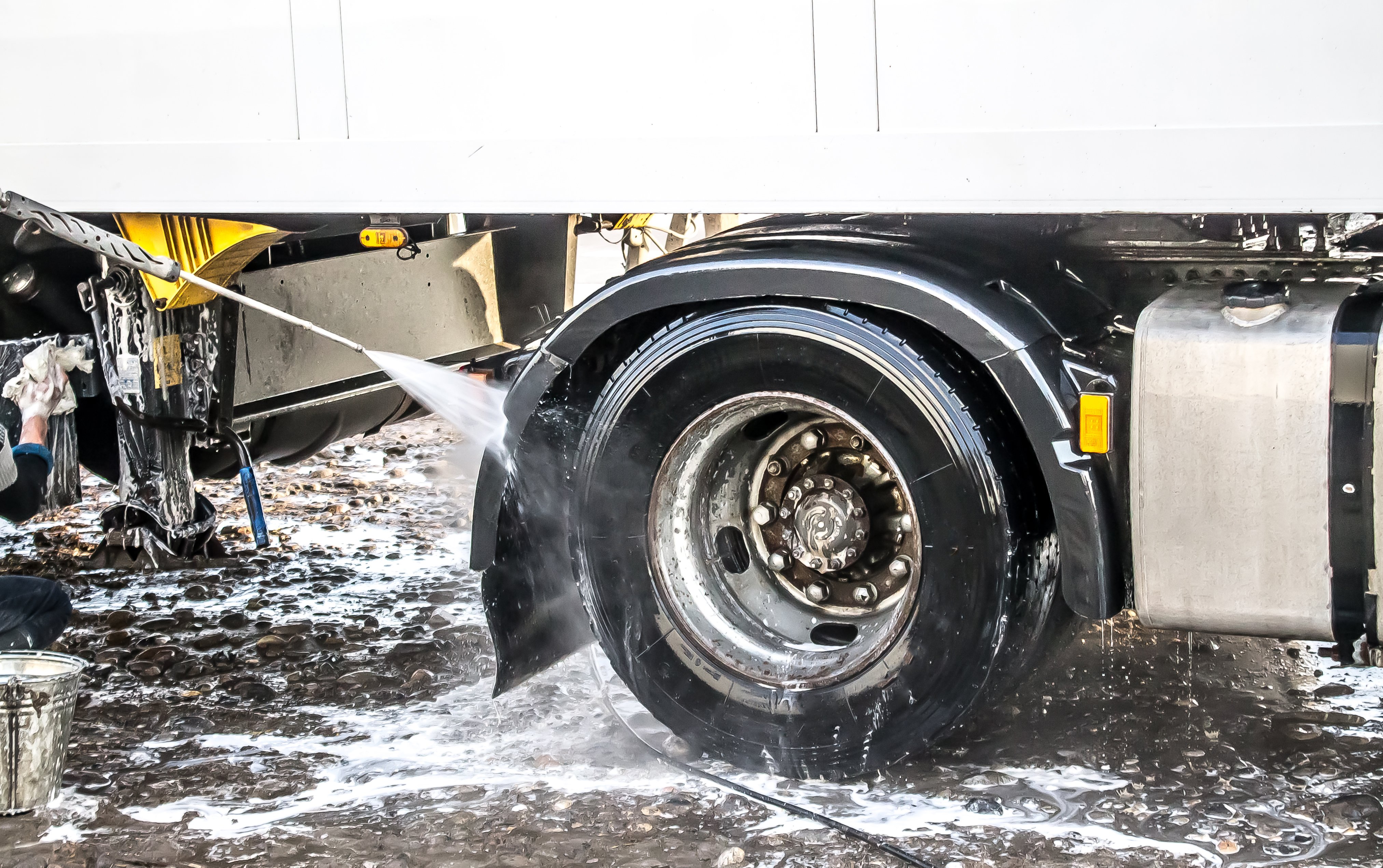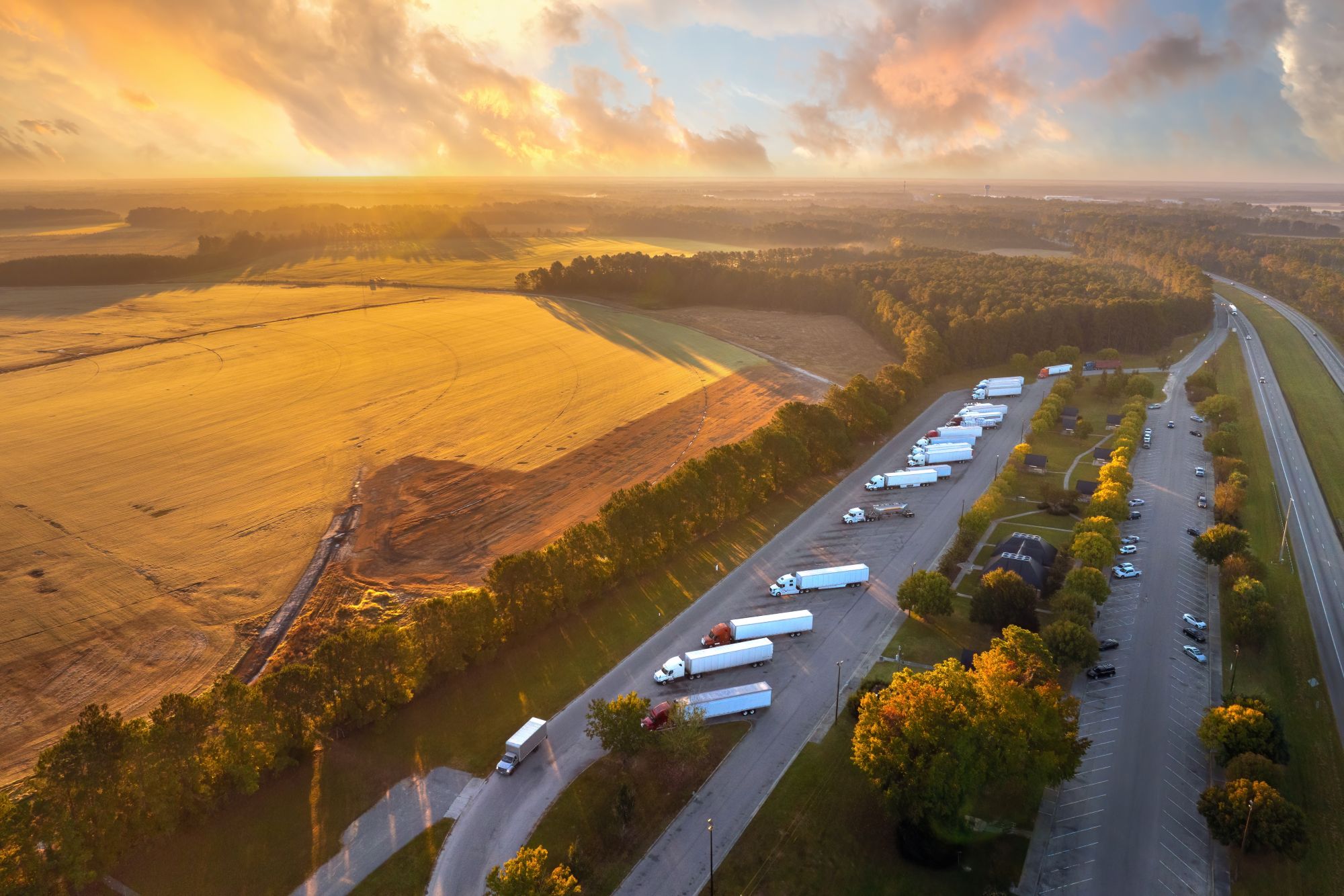
Miranda Blake
Zo vind je een truckwash bij jou in de buurt
Gemaakt: 23-10-2024
•
Bijgewerkt: 01-11-2024
Of je nu vracht over internationale grenzen vervoert of een vloot zware vrachtwagens beheert, ervoor zorgen dat je voertuigen grondig worden gereinigd en goed worden onderhouden kan een grote invloed hebben op hun prestaties, levensduur en algehele operationele efficiëntie. Gelukkig is het gemakkelijk om een betrouwbare en handige truckwash bij jou in de buurt te vinden - lees verder om uit te vinden hoe.
Wat houdt een truckwash in?
Als het gaat om het reinigen van voertuigen, hebben vrachtwagens gespecialiseerde faciliteiten en apparatuur nodig om aan hun unieke vereisten te voldoen.
Locatie en toegankelijkheid
Wasstraten voor vrachtwagens zijn strategisch gepositioneerd langs grote snelwegen en afritten van snelwegen, zodat ze gemakkelijk toegankelijk zijn en de doorstroming van zware voertuigen minimaal verstoren. Dankzij deze plaatsing kunnen langeafstandsvrachtwagens snel en gemakkelijk bij de nodige reinigingsdiensten geraken zonder de problemen van het navigeren door drukke straten in de stad.
Vereisten voor apparatuur en faciliteiten
Omdat vrachtwagens robuustere en krachtigere machines nodig hebben om het vuil en wegvuil aan te pakken dat zich ophoopt op hun uitgestrekte oppervlakken, hebben wasstraten meestal grotere laadperrons, grotere afstanden en speciale apparatuur, waaronder hogedrukreinigers en borstels met een grote reikwijdte.
Verbruik en kosten van hulpbronnen
Het wassen van een vrachtwagen vergt over het algemeen meer water en elektriciteit vanwege de omvang en het volume van de voertuigen en de noodzaak voor intensievere reinigingsprocedures. Een dergelijk toegenomen gebruik van hulpbronnen vertaalt zich in hogere operationele kosten, die vervolgens worden doorberekend in de prijs.
Dienstenaanbod en specialisatie
Een truckwash richt zich meestal op een uitgebreide reiniging van de buitenkant, met inbegrip van gespecialiseerde diensten zoals ontvetten van de motor en spatlappen wassen, om te voldoen aan de unieke behoeften en uitdagingen van het schoonhouden van zware bedrijfsvoertuigen.
(https://prodsnapstorage.blob.core.windows.net/public-news/80984f9c-b5ff-44bc-af16-91a1a0eadd8c-Blog%20image%204.jpg)
Navigeren door het truckwashlandschap met SNAP
Het vinden van de juiste faciliteit voor uw behoeften kan een ontmoedigende taak zijn. Dit is waar SNAP, leverancier van geïntegreerde diensten voor de wegtransportindustrie, tussenbeide komt om uw reis te vereenvoudigen.
Uitgebreid netwerk van vrachtwagenwasstraten
Ons netwerk strekt zich uit over heel Europa, met meer dan 230 locaties die specifiek voorzien in de behoeften van exploitanten van commerciële voertuigen. Deze zijn strategisch gelegen langs belangrijke snelwegen en transportknooppunten, zodat chauffeurs gemakkelijk toegang hebben tot de benodigde reinigingsdiensten zonder hun schema's of routes te verstoren.
Bekijk onze SNAP-kaart en ontdek hoe je voorzieningen bij jou in de buurt kunt vinden.
Naadloze integratie
SNAP Account integreert met het netwerk van wasstraten, waardoor chauffeurs en wagenparkbeheerders gemakkelijk voor hun diensten kunnen betalen met één enkele, beveiligde account. Hierdoor is er geen contant geld of meerdere betaalmethodes meer nodig, wordt de schoonmaakervaring gestroomlijnd en wordt een allesomvattende oplossing voor het beheer van wagenparkuitgaven geboden.
Wasoplossingen voor vrachtwagens op maat
Van het reinigen van de buitenkant onder hoge druk tot het wassen van het onderstel en het ontvetten van de motor, de wasstraten van SNAP zijn uitgerust met de juiste apparatuur en expertise om een grondige en efficiënte ervaring te leveren.
Veilige en toegankelijke depotparkeerplaats
Naast onze truckwashdiensten bieden we ook een netwerk van veilige en toegankelijke Depot-parkeerplaatsen in heel Europa. Deze speciale parkeerfaciliteiten, exclusief voor houders van een SNAP-account, bieden verbeterde beveiligingsfuncties en het gemak van vooraf reserveren van parkeerplaatsen via intruck, onze mobiele app. Dit geeft bestuurders gemoedsrust dat hun voertuigen veilig en toegankelijk zijn.
Geoptimaliseerd wagenparkbeheer met SNAP
Door ons volledige dienstenpakket te integreren, kunnen [wagenparkbeheerders] (https://snapacc.com/fleet-operators/) hun activiteiten stroomlijnen en een grotere efficiëntie bereiken. Van naadloos wassen van vrachtwagens en veilig parkeren tot brandstofbeheer en Dartford Crossing-betalingen: onze oplossingen stellen wagenparkbeheerders in staat om zich te concentreren op hun belangrijkste bedrijfsdoelstellingen en tegelijkertijd maximaal gebruik te maken van de kracht van technologie om hun processen te optimaliseren.
Verbeter de prestaties van uw wagenpark met SNAP
Het schoon en gezond houden van uw commerciële voertuigen is een cruciaal aspect om operationele uitmuntendheid te garanderen. Door gebruik te maken van SNAP's uitgebreide netwerk van gespecialiseerde faciliteiten, kunt u de prestaties en levensduur van uw wagenpark verbeteren en tegelijkertijd het algemene beheer van uw transportactiviteiten vereenvoudigen.
Onze geïntegreerde services bieden een allesomvattende oplossing die voldoet aan de unieke behoeften van de bedrijfswagensector. Wij zorgen ervoor dat u zich kunt concentreren op wat het belangrijkst is - het veilig en efficiënt afleveren van uw vracht, terwijl u de rompslomp tot een minimum beperkt en de winstgevendheid van uw bedrijf maximaliseert.
Dus laat SNAP uw vertrouwde partner zijn om de ongerepte staat van uw voertuigen te behouden terwijl u de weg aflegt. [Meld je vandaag nog gratis aan! (https://snapacc.com/sign-up/)



